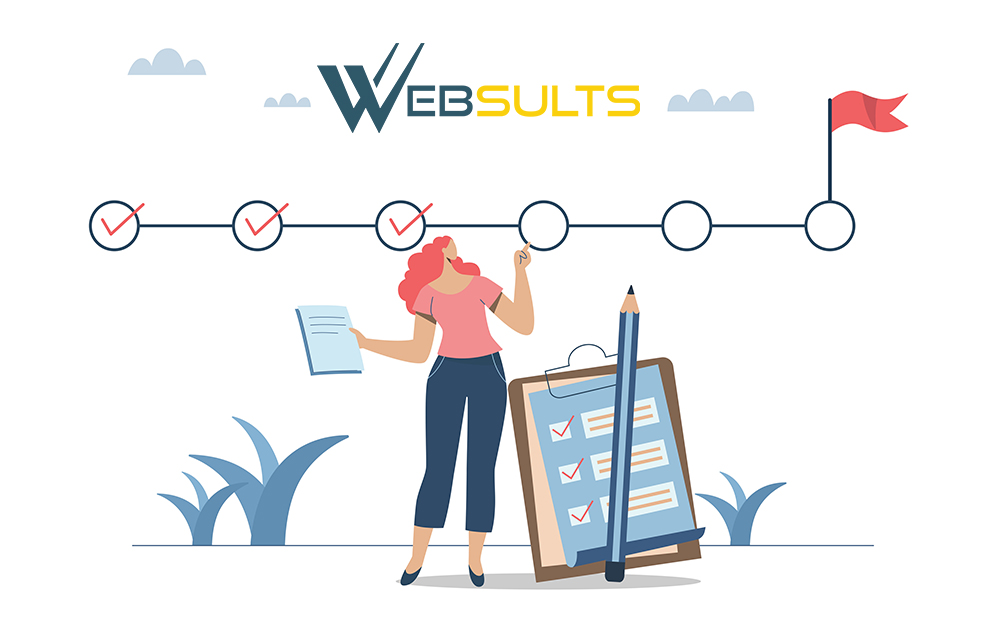Are you planning to launch a new website for your business this year? Website design project planning is a tool used by many companies to ensure they have a successful website launch. It is the structured process of organizing and managing all aspects of a website development project from start to finish. It involves defining the goals, scope, timeline, resources, and deliverables required for an effective site. Let’s look at the key components of website design project planning and how it will ensure your site is delivered on time and within budget.
Key Components of Website Design Project Planning
1. Project Goals & Objectives
The first step to ensure a successful website design project is to define the purpose of the website. Depending on your business goals, this could be lead generation, e-commerce, or brand awareness. You should keep this goal in mind throughout the next stages to ensure you don’t lose sight of the why behind your new website.
2. Target Audience & User Needs
After identifying the project goals and objectives, you should focus on understanding the primary user. Think about their preferences and how the website will serve them and ensure you come back to this when moving further through the process.
3. Scope of Work
You’ll now be ready to outline features, functionalities, pages, and any integrations required. Ensure you are clear about your website type by this stage, which may include a business website, e-commerce store, portfolio, or blog. List the pages and features you want to include within the site. Common pages that most websites incorporate include Home, About, Services, Contact, and a Blog. Functionality requirements should be reviewed, especially if you want to add contact forms, e-commerce capabilities, and appointment booking. You can then use all this information to think about your site’s technology stack, including CMS, site framework, hosting provider, and third-party tools you may require.
4. Budget & Resources
With a solid idea of what you plan to do with your site, you can determine the costs, tools, and team members required to make this a successful website launch. Designers, developers, and content creators may be required to work on the site, and you’ll want to budget for the tools and software you need to use, such as WordPress, Shopify, Adobe XD, Figma, and Google Analytics.
5. Sitemap & Wireframes
Plan the website structure and create basic design layouts for user flow. A sitemap lists the main pages and their hierarchy and gives an overall idea of how visitors will flow through the site. Wireframes provide sketches or prototypes of key pages and will help to keep you on track when designing the site.
6. Content Strategy
A content strategy is critical for any website to perform well online and within search engine results. Organize text, images, videos, and other media that will populate the site, and outsource tasks to content creators if you need support adding content. Content requirements will vary depending on your business needs but usually include text, images, videos, and downloadable files, which can all combine to create an interactive browsing experience. We recommend forming a content creation and approval process so you know who writes, reviews, and approves content. SEO considerations at this stage should include URL structure, keyword research, and meta descriptions, all of which help your site to rank highly on search engines such as Google.
7. Design & Development Timeline
Establish research, design, development, testing, and launch phases. These phases are crucial to website design project planning and will ensure you have an idea of your launch date and the steps needed to ensure your site launches on time and within budget.
8. Testing & Quality Assurance
You don’t want any issues following deployment that will impact the user experience. Once your site is starting to come together, check responsiveness, speed, security, and user experience before deployment using a variety of devices and screen sizes.
9. Launch & Maintenance Plan
Set a launch strategy and plan for ongoing updates and improvements. Remember, a website requires regular maintenance and reviews to remain successful and offer your clients the up-to-date information they need to continue supporting your business or purchasing your product.
Effective website design project planning ensures the final product meets business goals. It helps to create user-friendly sites that are delivered on time and within budget and offer your business better visibility online.
Contact Websults
Based in Clearwater, Florida Websults is a results-driven digital agency specializing in custom website design, SEO (Google organic), and digital marketing strategies to help businesses thrive online. With a focus on data-driven decision-making, Websults creates user-friendly websites that enhance brand visibility and drive conversions. Our website design expertise spans across multiple industries, including: self storage, automotive parts, tennis, legal, insurance, healthcare, and real estate. Contact Websults today for more information about how we can support you with a website design project planning.


